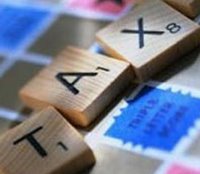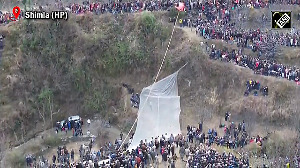 The changes to the original draft of the direct taxes code are going to cost taxpayers, with the government planning to significantly alter the slabs.
The changes to the original draft of the direct taxes code are going to cost taxpayers, with the government planning to significantly alter the slabs.
While the slabs are yet to be reworked, officials indicated the highest one could be in the range of Rs 10-15 lakhs (Rs 1-1.5 million), instead of the Rs 25 lakhs (Rs 2.5 million) proposed when the first draft was released last August.
Finance ministry officials said none of the changes proposed in the second discussion paper on DTC would lead to increased revenue for the government.
If it sticks to the slabs proposed in DTC, its revenue collections, which showed an annual growth of 24 per cent in last five years, would be badly hit. The government is planning to implement DTC from next April, so the new slabs will affect the tax rates next year onwards.
"The highest slab should be around Rs 10-15 lakhs (Rs 1-1.5 million) . . .It will not be possible for the revenue department to give all those exemptions and still keep the slabs high.
"The slabs suggested in DTC-1 are exorbitantly high, considering most revenue-generating proposals in the original draft have been changed in DTC-2," an official in the finance ministry told Business Standard on condition of anonymity.
The official added that the rates -- 10 per cent, 20 per cent and 30 per cent -- will be retained but a final decision on the slabs would be taken after assessing the revenue impact of all other proposals in the DTC.
Per capita income of India, the average amount each person earns in the country, is Rs 44,345 or Rs 3,695 a month.
If the government fixed the highest bracket at Rs 25 lakhs, out of 35 million taxpayers, only those earning more than Rs 200,000 a month were required to pay tax at 30 per cent.
Experts said the slabs would be lowered from the levels suggested originally, but not substantially.
"It is expected that the liberal rates proposed in the first draft of DTC will not remain so liberal in the Bill that goes to Parliament. I guess the highest slab will be in the range of Rs 15-20 lakhs (Rs 1.5-2 million)," said Sonu Iyer, partner at consulting firm Ernst & Young.
Nikhil Bhatia, executive director, PricewaterhouseCoopers, said there was a possibility that the highest slab might be brought down to Rs 20 lakhs (Rs 2 million) and above.
"But I think it would be better to take away all exemptions and deductions and leave the slab at Rs 25 lakhs," he added.
In the second discussion paper, the government has decided to retain the exempt-exempt-tax method of taxation, which would have made individuals pay tax on savings instruments at the stage of withdrawal.
While the rates of taxation have not changed in the last 14 years, income tax slabs have been widened from Rs 40,000-Rs 1,50,000 in 1997 to Rs 1,60,000 to Rs 800,000 today -- an increase of over five times in the highest slab.
After widening the slabs in the first Budget of United Progressive Alliance-II in July 2009, Finance Minister Pranab Mukherjee surprised everyone by setting the highest slab at Rs 800,000.
This is estimated to result in a revenue loss of Rs 26,000 crore (Rs 260 billion) in 2010-11.
The move was seen as a step towards introduction of the high slabs proposed in DTC.
The revised discussion paper on DTC is silent on tax slabs. It said the indicative tax slabs and tax rates proposed in DTC would be calibrated.
The finance minister has said rates would be part of the DTC legislation slated to be introduced in the coming session of Parliament.









 © 2025 Rediff.com -
© 2025 Rediff.com -